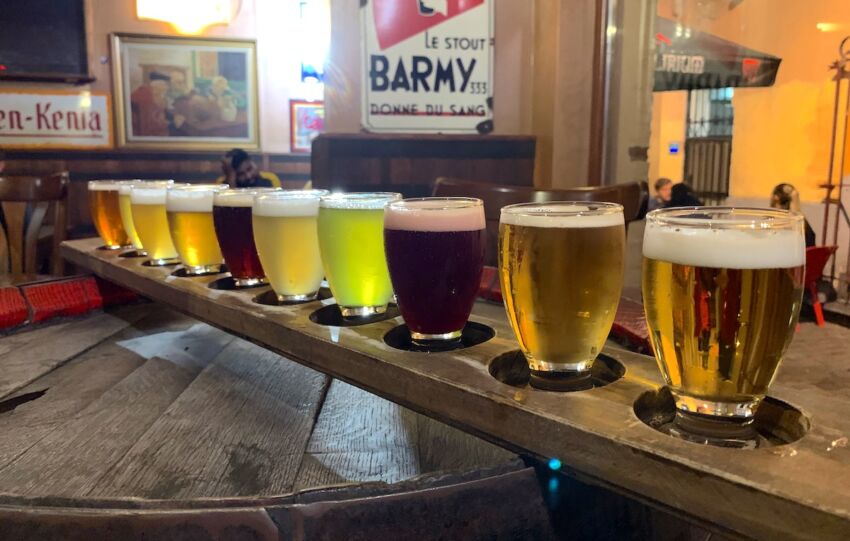Share This Article
Being inscribed on the UNESCO World Heritage List is reason enough for me to take an interest in a place. That’s how I discovered Bardejov and decided to visit this town during my time in the area. If you are in the northern part of Slovakia, you should definitely add it to your must-visit list.
Our visit to Bardejov coincided with a major festival and the city was filled with people, but we were still enchanted by it. I am sure it has just as much charm off-season, but the event we attended was very well-organized and, despite it not being a weekend, it was very popular with both locals and visitors from the surrounding areas.
Bardejov is considered one of the oldest Slovak towns, with a population exceeding 33,000 people. Many also regard it as the most Gothic city in all of Slovakia!
Location and access
Bardejov is sometimes translated into Polish as Bardejów, but you can also come across the version Bardów. It is located in Slovakia, in the historical region of Šariš, within the Prešov region. Bardejov is 226 kilometers away from Kielce, and 18 kilometers away from the Polish border.
The best way to explore the city is on foot. You can leave your car inside the city walls (which is more expensive) or outside the walls. Remember about the paid parking zone – you can buy tickets at designated points (e.g., the Tourist Information at the Market Square and others).
Bardejov on the UNESCO World Heritage List
Since 2000, Bardejov has been included on the UNESCO World Heritage List. The UNESCO Committee appreciated the city for being an excellent example of medieval urban development from the turn of the 13th and 14th centuries. Attention was also drawn to the fact that the city’s fortifications, at the time of their construction, were among the most modern in Europe. Another important element is the high level of authenticity of the urban complex. Despite the fires that plagued the city, the urban layout remained mostly unchanged.
The entry on the list was preceded by the awarding of a gold medal by the ICOMOS Foundation in 1986.
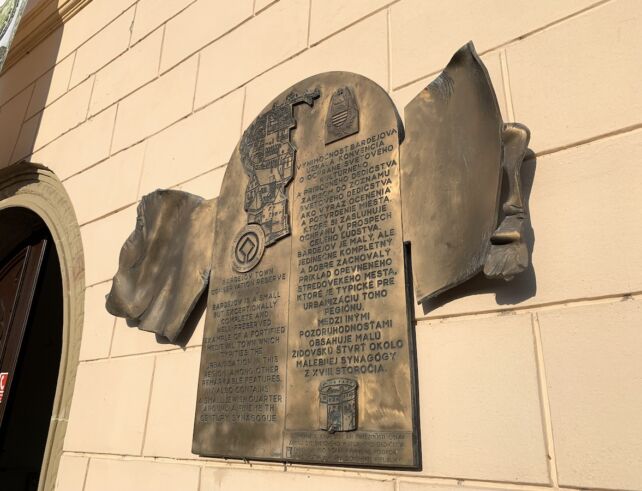
History of Bardejov
The first mentions of the town date back to 1241, and it likely had fortifications by the 14th century. However, settlement in this region existed much earlier, probably already in the Neolithic period. The beginning of the town was marked by a Cistercian monastery founded here by Polish monks. Documents from the 13th century suggest that the Cistercians who came to what is now Bardejov originated from Koprzywnica.
In the early 14th century, settlers from Silesia arrived in these regions. The commercial privileges granted to the town caused it to develop rapidly. By the 14th century, documents ceased to mention the monastery, and its fate remains somewhat unclear. The defensive walls of Bardejov began to be erected in the mid-14th century during the reign of King Louis. Not much later, the town obtained the right to wield the sword and had its own executioner. For a short period in its history, Bardejov was a free royal city.
The peak of the town’s development came at the beginning of the 17th century. As is often the case in history, the following 18th century was full of epidemics, fires, and disasters. In 1893, Bardejov was connected to Prešov by a railway line. Later, its development slowed down, and many believe that this helped preserve many of its historical monuments.
In the 20th century, the town of Bardejov became a symbol of the national revival of Slovakia. In 1946, the town was the venue for the Bardejov Congress, an important meeting of national activists who sought autonomy for Slovakia.
Main Square
Many people say that Bardejov has the most beautiful market square in Slovakia! See for yourself that it looks very nice, and if you take away the stalls from my photo, it will be even more interesting.
It is in the Bardejov market square that the executioner’s monument is located. A full-size bronze sculpture with a hood, along with an ax and a stump to perform “executioner’s” work, is waiting for you.
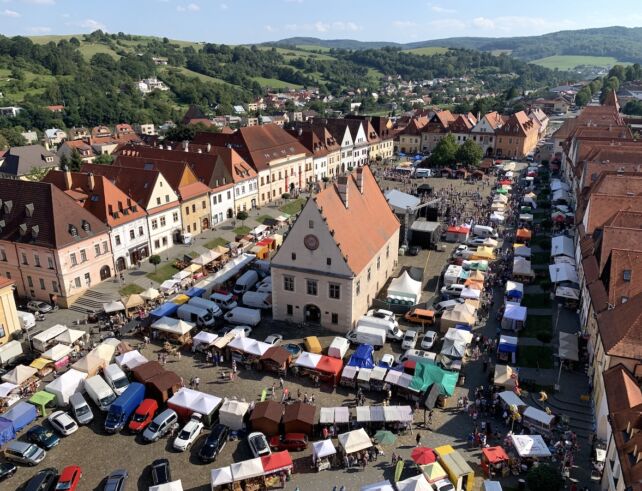
Church of St. Giles (Sv. Egidia)
This temple, located right on the Market Square, is one of the city’s landmarks. Its construction began in the 15th century, on the site of a previously located monastery. It is a church built in the Gothic style, and its construction was completed in 1518.
Inside, it is worth paying attention to the wing altars, of which there are 11, and each of them hides a lot of interesting details. The side altar of the Nativity of the Lord is considered the most interesting. The church has the title of minor basilica, given to it by Pope John Paul II in 2001. The church has many interesting historic altars, including:
- Altar of Saint Andrew – 1440 – 1460 (the only panel wing altar from the original installation in the temple)
- Altar of Saint Barbara – 1450-1470
- Altar of Saint Elizabeth – around 1480
- A small altar of the Blessed Virgin Mary, called the altar of St. Anna – around 1485
- Altar of the Blessed Virgin Mary, called Veronica Magerova – 1489
- Altar of Saint Cross – 1480-1490
- Altar of the Nativity – around 1480-1490
- Altar of Saint Apollonius, called the altar of Saint. Anna Mettercie – around 1490-1510
- Altar of Vir Dolorum (Sorrowful Redeemer) – 1500-1510
- Altar of the Blessed Virgin Mary – 1505
- Altar of Piety – 16th century
The church is open to visitors from Monday to Friday from 9:30 a.m. to 4:00 p.m., on Saturdays from 10:00 a.m. to 3:00 p.m. and on Sundays from 11:30 a.m. to 3:00 p.m. The entrance ticket costs 4 Euro, but there is also an additional fee for taking photos – 2 Euro. If you are going with children, a ticket for them costs 2 Euro and for students 4 Euro. The ticket to the basilica also includes entry to the bell tower.
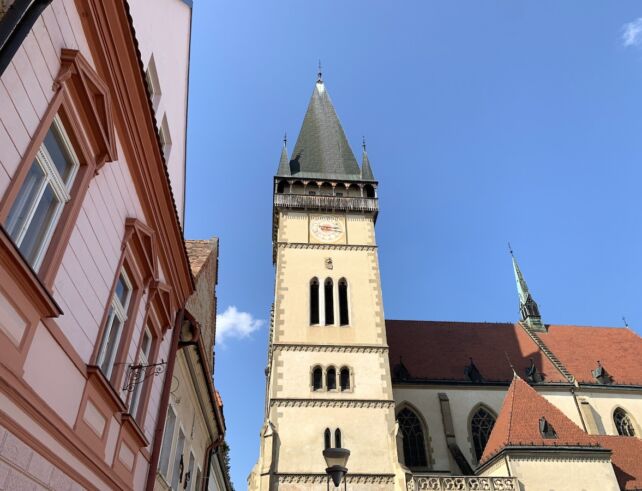
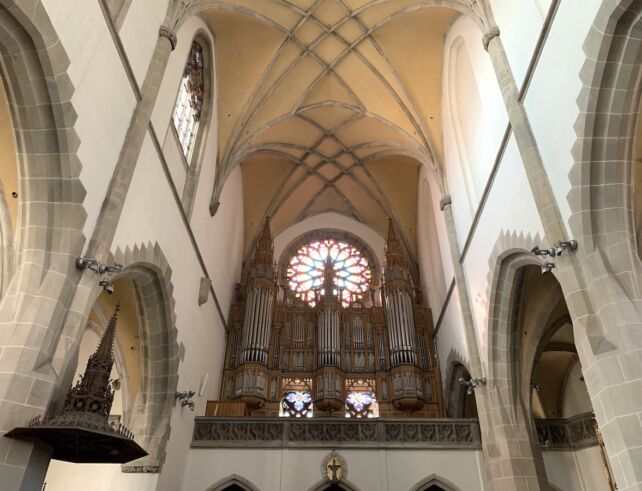
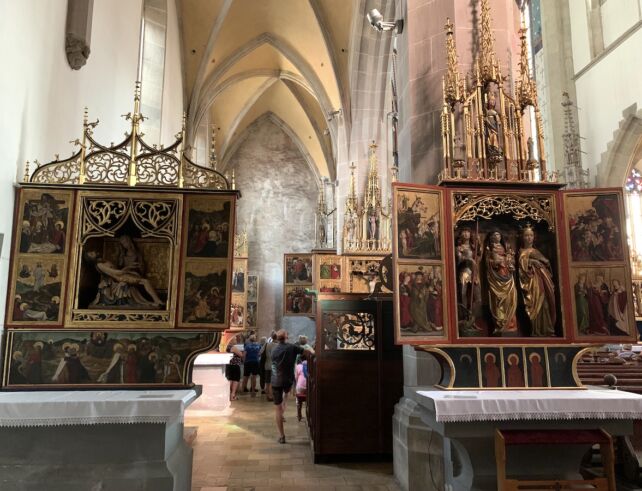
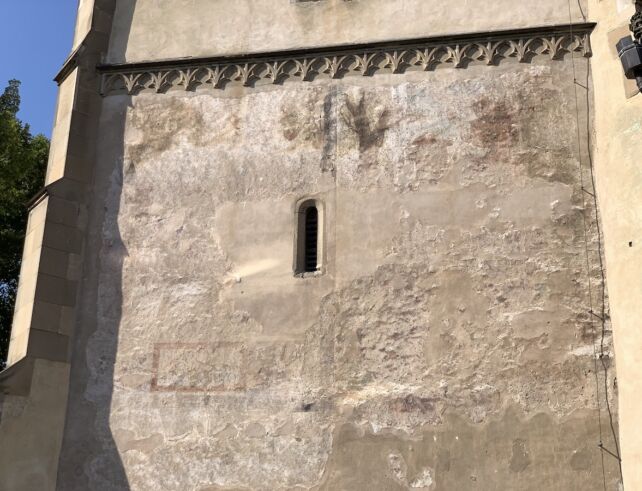
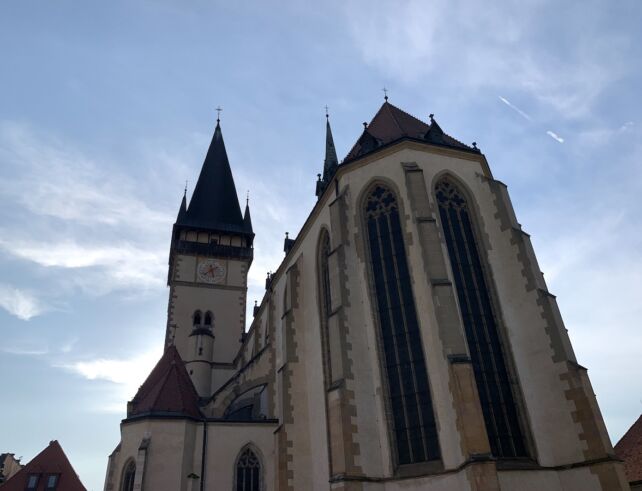
Observation tower – bell tower
Church of St. Giles is not only an extraordinary building with an interesting history and priceless objects, but also an observation tower from which there is a spectacular panorama of the city. It is from here that you will have a clear view of the Bardejov market square and the entire surrounding area.
There are a lot of steps leading up, and the staircase is narrow and steep. It is almost impossible for two people to pass each other on the stairs, it is better to use the alcoves on the route up. However, the stone staircase turns into a larger staircase. Remember that the tower still serves its original function, i.e. it is a church bell tower, whose bells often ring, and then the entire structure gently trembles.
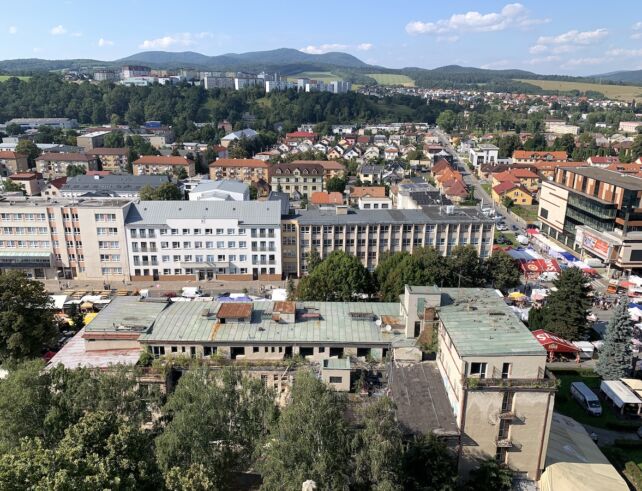
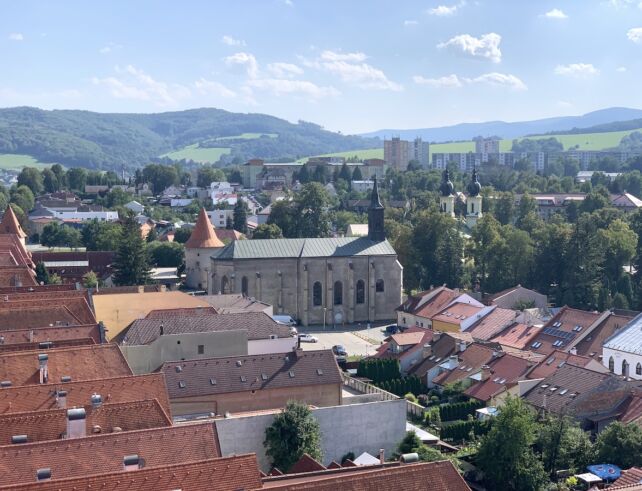
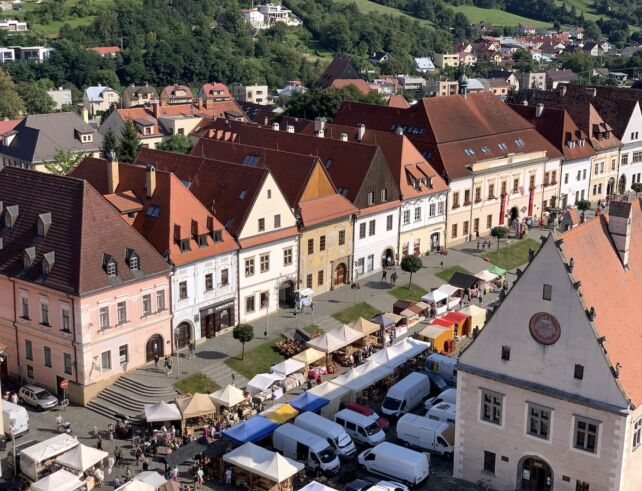
Cityhall
The Town Hall is located in the very center of the Market Square. It is a Gothic-Renaissance building that today houses a museum. It is probably the first secular Renaissance building in Slovakia. Work on its construction began in 1505. They lasted several years, and in the meantime the builders also changed. The last major modification took place after a fire in 1902, when the facility was adapted for the needs of a museum.
City walls
In many places you will encounter city walls that have protected the city against unexpected guests for years. They are not 100% preserved, but you will find quite a lot of them. The remains of gates, towers and walls themselves are waiting for you. City fortifications began to be built in 1352 during the times of King Louis of Hungary.
Bardejov’s city walls were made of stone, and the entire fortifications had a shape similar to an oval. There was a sidewalk on the walls, which was covered over time. In its heyday, the city was surrounded by 23 towers and double walls with a moat. The towers have been preserved to this day, along with the reconstructed barbican. As for the walls, they have been preserved entirely on the eastern side and most of them on the north and south. The towers were under the care of local guilds and contained weapons supplies in case of an enemy attack.
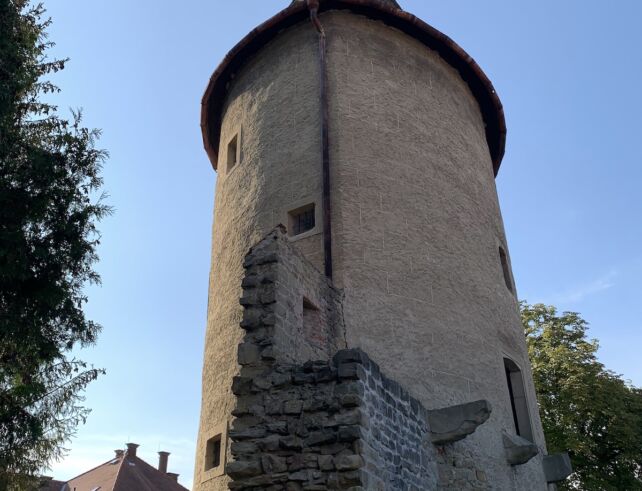
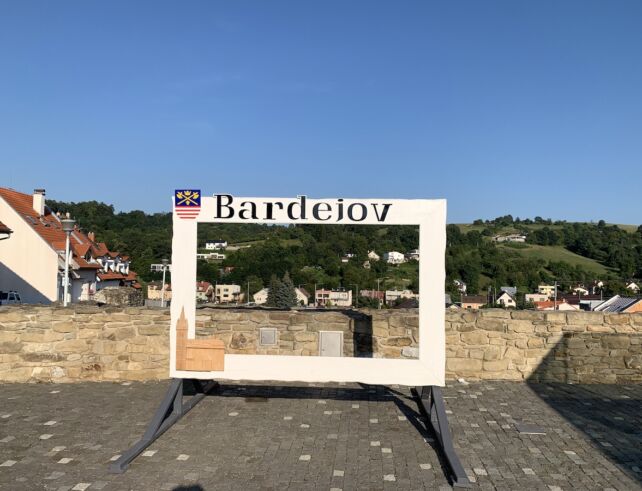
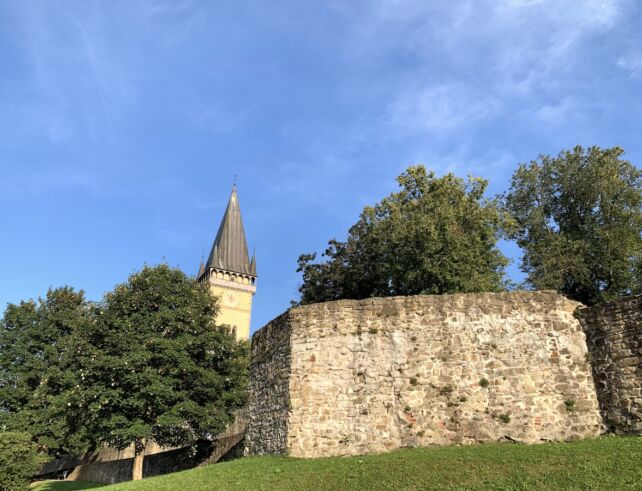
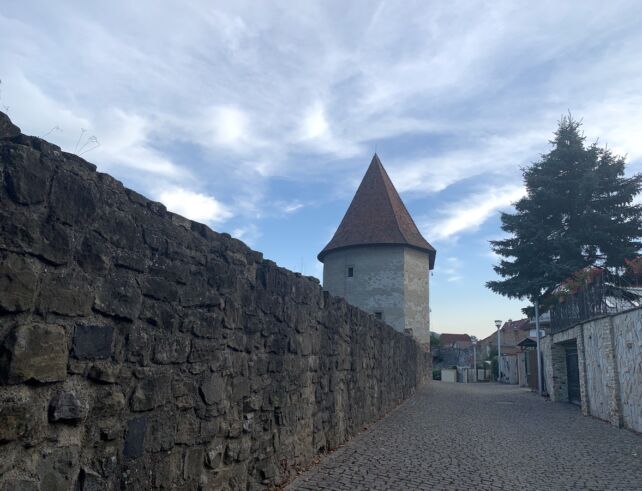
Jewish district
There is a Jewish district near the Market Square. The history of the Jewish community in the city dates back to the first half of the thirteenth century. There were three synagogues in Bardejov, two of which have survived to this day. In the first photo you will see the synagogue of the Bilkur Chocim association, which many consider to be the best preserved in all of Slovakia.
Quite by accident, we also came across a Jewish cemetery. It is located approximately 2 kilometers from the center at ul. Ľudovíta Štúra. It was currently closed, but I managed to find out that there are matzevot there dating back to the 17th century. You will find over 1,000 tombstones, most of which were restored during the renovation of the cemetery in 2008.
In the Jewish Podgrodzie complex, a Holocaust monument with the names of over 3,000 victims was unveiled in 2014.
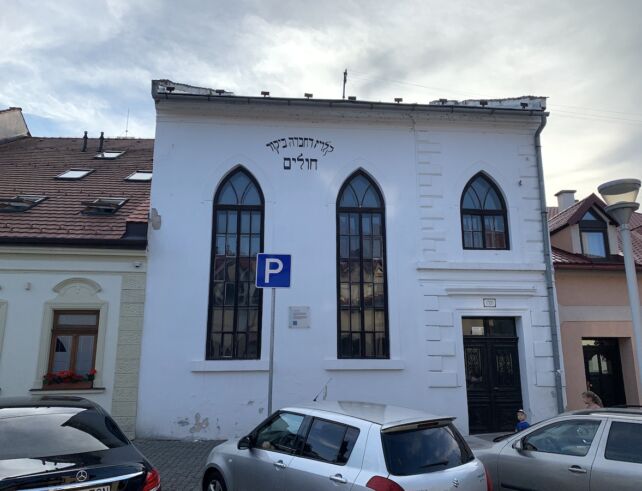
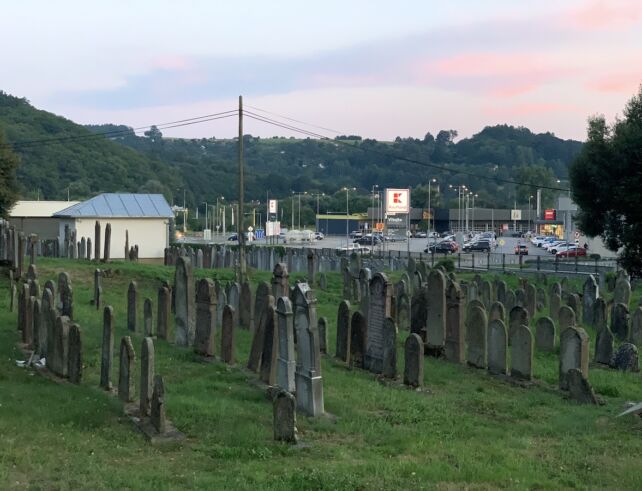
John Lennon Street and Park
Near the Market Square you will find a place dedicated to the work of John Lennon and The Beatles. A tribute to them was created at the back of the house of one of the fans – Pavel Zajac. He also has a rich collection dedicated to the band in his basement.
There are also other bands on the wall from the glory days of The Beatles, but also from later ones that used and were inspired by their work. This street is one of the shortest in the city, and the park is often called a park, because it is not impressive in size.
Every year on December 8, the anniversary of John Lennon’s death, fans of the band from all over the world come to Bardejov. There is also a concert in memory of the musician.
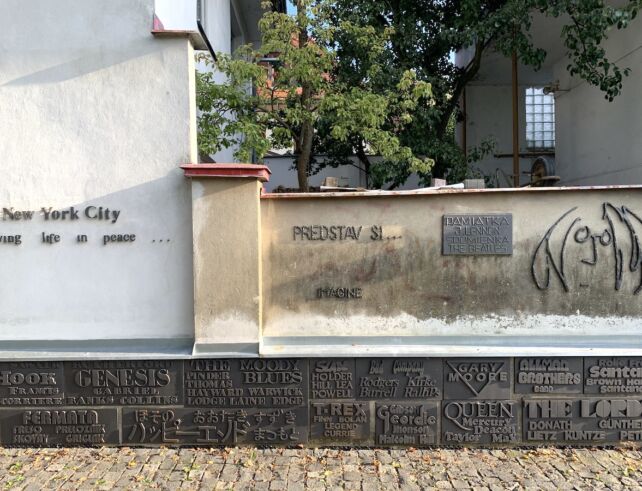
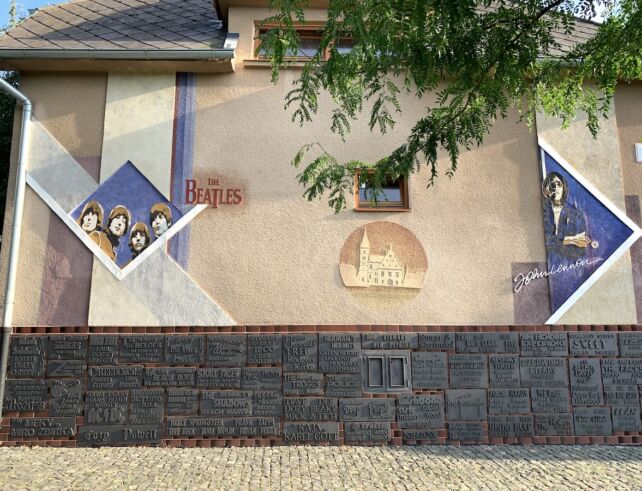
Food in Bardejov
In Bardejov you will find a lot of interesting places offering cuisine from all over the world. We decided on a place located near the Market Square, on Hviezdoslavova Street, and it was called Slovenská reštaurácia. Traditional decor and the menu includes regional cuisine. We decided on marinated hermelin, bryndza haluski, fried cheese and chicken strips, and of course Kofola. Both price and taste were ok.
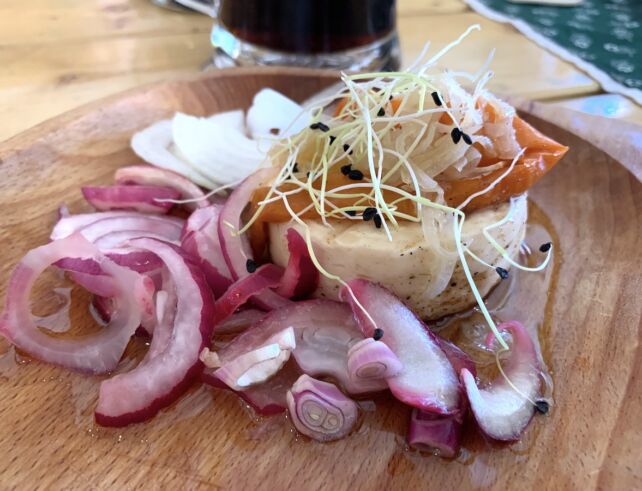
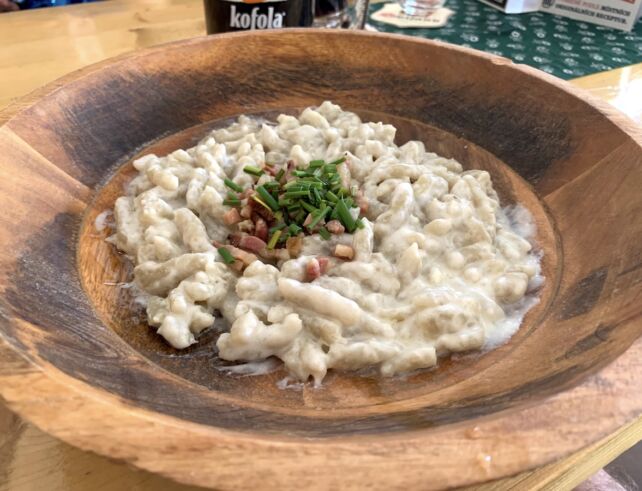
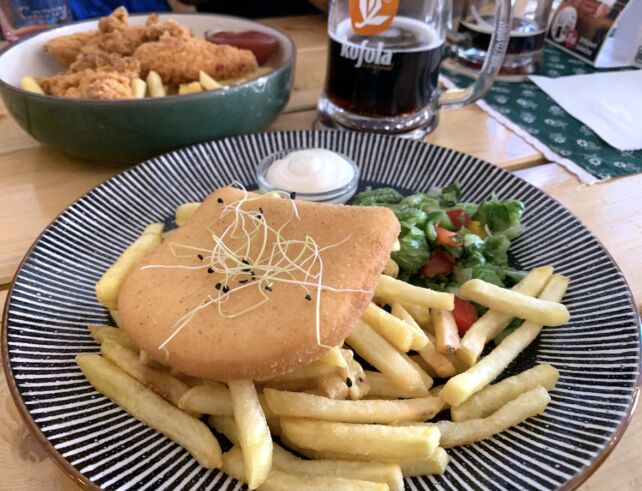
What’s nearby?
Bardejov is included in the UNESCO World Heritage List, but there are also other sites on this list in the area. The closest place is Hervartov, where the wooden church of St. awaits you. Francis of Assisi. It is included on the list together with other wooden Carpathian churches. The one in Hervartov probably dates back to the 15th century and is the oldest wooden church in Slovakia. Right next to the church, pay attention to the characteristic cellars that you will find in this region, with a beautiful blue color.
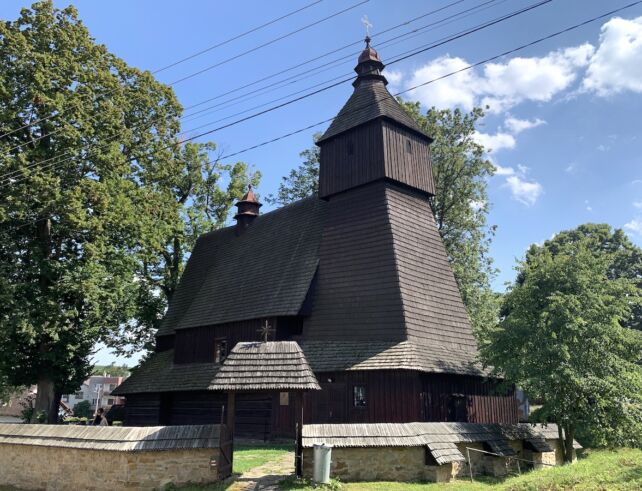
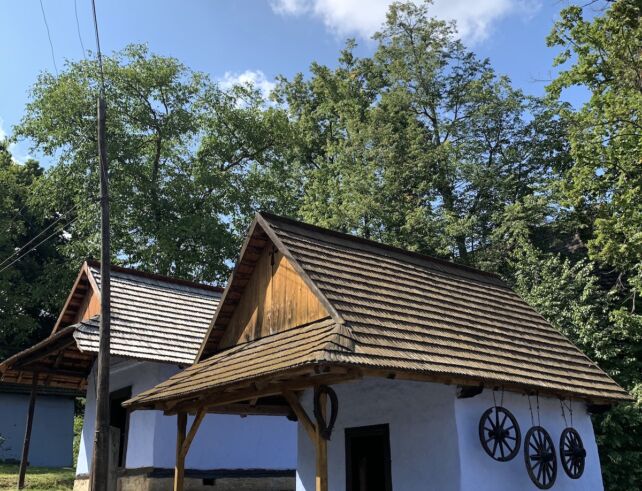
There are also several castles right next to Bardejov. South of the city lies Zborov Castle, also called Makovica. It was probably built in the 14th century. Today, only ruins remain of it, but they give an idea of the former building, and the views from underneath are worth the hike to the top.
Just outside the city, on the slope of the Busová Massif, lies the Bardejov spa town (Bardejovské kúpele). There you will find an extraordinary Museum of Folk Architecture and healing waters.
Is it worth visiting Bardejov?
Bardejov is a small town that can charm you! It made a huge impression on me and I know that when I’m in the area, I will definitely visit it again. Not only the city, but also the surrounding area seems very interesting! Beautiful churches, castle ruins and mountains are just some of the reasons why Bardejov should be included in your travel plans.



